Architectural brilliance or the slow surrender of time? Either way, Italy’s tilting towers, crooked palazzi, and leaning monuments remain among the most intriguing works of art ever created.
The places we’ve chosen are fascinating because of their strange angles and the way they seem to challenge the laws of physics. Here’s where you can find some of the most remarkable crooked buildings in Italy.

Crooked buildings in Italy you should see

There’s something endlessly fascinating about anything that dares to challenge gravity. Unstable ground, natural disasters, or miscalculations. The causes vary, but the outcome is the same: an extraordinary display of architectural resilience that, in some cases, has become iconic.
Italy’s tilting towers and slanting palazzi stand as proof that imperfection can give rise to beauty (and a certain kind of eternal charm).
Some of these tilts happened by accident, others through restoration work or the evolving fabric of city life. Now, they are part of their cities and people’s memories, so much so that it is hard to imagine them standing straight, and it would not feel right if they did.
On our journey through the most unusual feats of Italian architecture, we’ll pass by the world’s most famous leaning tower, campanili that seem to defy balance, and a mysterious tilted construction in the Eternal City. Here are the crooked buildings in Italy you won’t want to miss.
Listen to the podcast version of the article with the voice of Monna Lisa & Leonardo
7. Leaning Tower of Pisa, Pisa

Built in 1173 and inaugurated in 1372, the Tower of Pisa (commonly called the leaning tower) is the best-known crooked building in Italy and abroad and the iconic building of Pisa.
It's part of Piazza dei Miracoli, also known as Piazza del Duomo, declared a World Heritage Site by UNESCO. With its 56 meters high, nine floors and seven bells, it is the bell tower of the adjacent Cathedral of Santa Maria Assunta.
The cause of its slope derives from the clayey and its sandy soil: it began to incline at the beginning of the construction of the third floor, temporarily interrupting the works.
Consequently, the upper floors were built with a curvature in the opposite direction to the slope.
Visit the Leaning Tower of Pisa6. Tower of Asinelli and of Garisenda, Bologna

In medieval era, Bologna (as well as other cities in the Po Valley), could boast of an urban panorama that included about one hundred and fifty towers.
They had not only a strategic purpose from a military point of view, but they reaffirmed, in an architectural sense, the prestige of their respective owner families.
Today there are few real testimonies of that era, including the Tower of Asinelli and the Tower of Garisenda, both built starting from 1109 and hanging on opposite sides. They're located next to each other and mark the entrance to the historic city centre.
Both towers have withstood various events that could have caused the collapse, but today they are still standing, acting as guardians of the city.
5. Bell tower of the Basilica of San Pietro di Castello, Venice
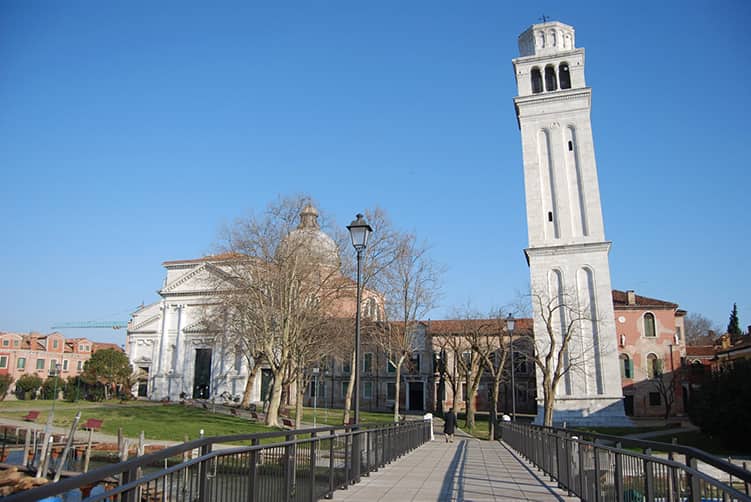
In Venice, a city full of churches and respective bell towers, there are some leaning buildings due to the soft and muddy ground on which they built it.
One of these is the bell tower of the Basilica of San Pietro di Castello, located at the north-eastern end of Venice, on the small island of San Pietro in the Castello "sestiere", not far from the Arsenale docks.
The construction of the bell tower dates back to the second half of the 1400s, and after being struck by lightning, they covered in Istrian stone.
Visit the Venice islands4. The leaning house of the Parco dei Mostri, Bomarzo
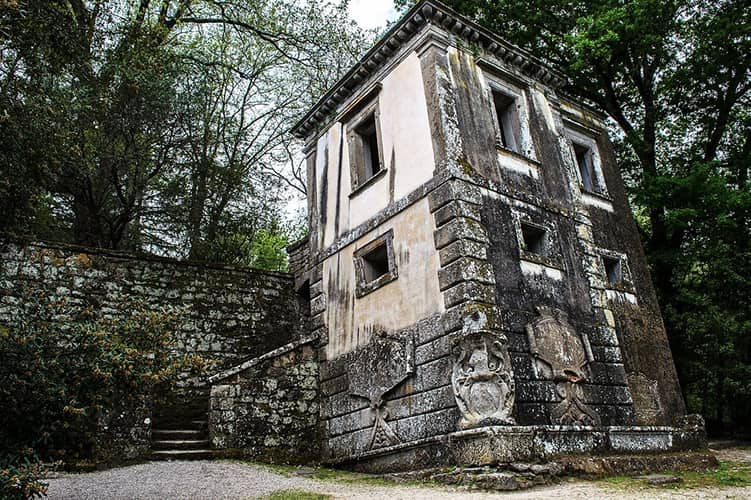
Bomarzo is a small town in the province of Viterbo, in the Lazio region. It's famous from a tourist point of view as it hosts one of the most evocative parks in Italy: the Parco dei Mostri (Park of Monsters), also called Sacro Bosco or Villa delle Meraviglie, a monumental complex surrounded by nature with basalt buildings depicting mythological animals, divinities and monsters.
Inside the park, one of the main attractions is the leaning house, a small building: inside it, it is also possible to enter, deliberately leaning and built on an inclined boulder: it's believed that the entrance to the park was right at the house, causing bewilderment and nausea to those who try to enter it due to the irregularity of the interiors and flooring.
3. Palazzo dell'Orologio, Pisa
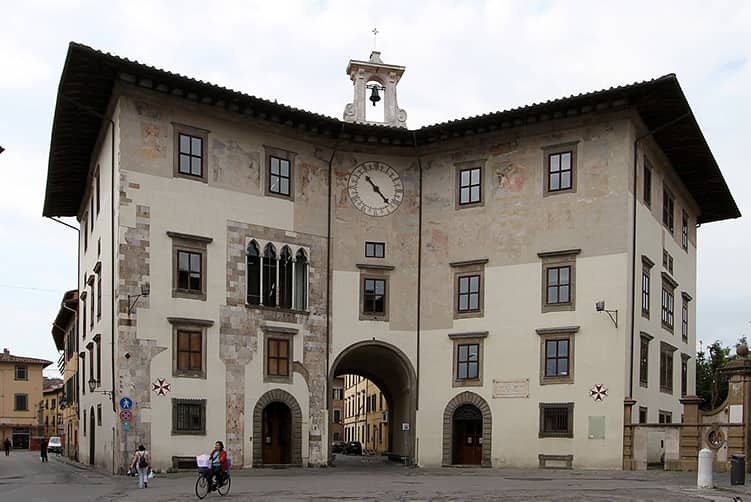
In Pisa, it's not only the homonymous tower that is leaning but also the Palazzo dell’Orologio.
The palace overlooks Piazza dei Cavalieri, the second most important square after Piazza dei Miracoli. Its particular architecture results from the merger of two medieval towers: the present building is the sum of the merging of the two neighbouring buildings through an arch with the clock.
You can see the slope very quickly by looking at the building from the front since both towers lean towards each other and find a junction point in the central part, precisely the clock.
Discover what else to see in Pisa in a day.
2. Bell tower of the Church of San Giorgio dei Greci, Venice
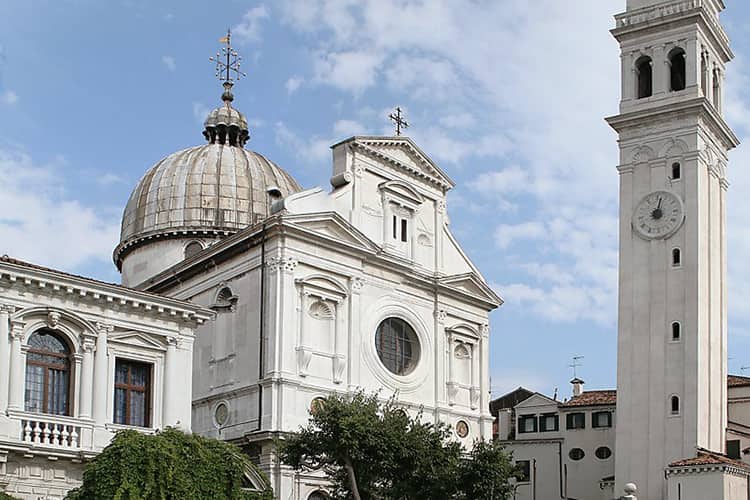
Tucked away in the Castello district, near the Church of San Zaccaria and overlooking the Rio dei Greci, the Church of San Giorgio dei Greci stands as one of the most important symbols of Venice’s Greek Orthodox community.
Beside the building rises its distinctive bell tower, built from Istrian stone between 1587 and 1603 to a design by Bernardino Ongarino. The tower leans noticeably to the south, the result of a subsidence in its foundations that began during the earliest stages of construction, even before the belfry was completed.
Inside, the church dazzles with richly decorated interiors and a magnificent Byzantine iconostasis. Visit it during a weekend in Venice.
1. Torre delle Milizie, Rome
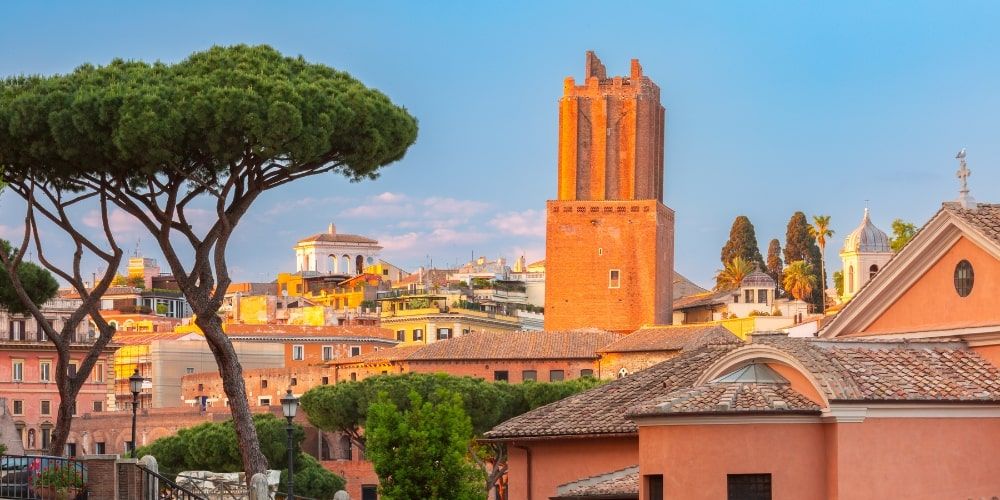
Even Rome has its own leaning tower, a medieval structure rising above the Imperial Forums. The name is Torre delle Milizie, and it forms part of the Trajan’s Market complex.
That lean isn’t an optical illusion. Its rebellious slant, which still distinguishes its silhouette amid the city’s historic skyline, was caused by an earthquake that occurred in 1348.
According to legend, Emperor Nero watched the Great Fire of Rome from this very tower, though that’s chronologically impossible. The massive Torre delle Milizie was actually built much later, between the late 12th and early 13th centuries, at the behest of the Conti di Segni family.
Originally standing 60 metres tall, the tower lost part of its upper section during the quake, and it is now around 50 metres tall.
It’s not open to visitors, but you can admire its distinctive lean from Via IV Novembre. We’ll let you in on another great viewpoint in our article about Rome's Rione Monti.
Get your Rome PassAbout the author
Written on 19/04/2021

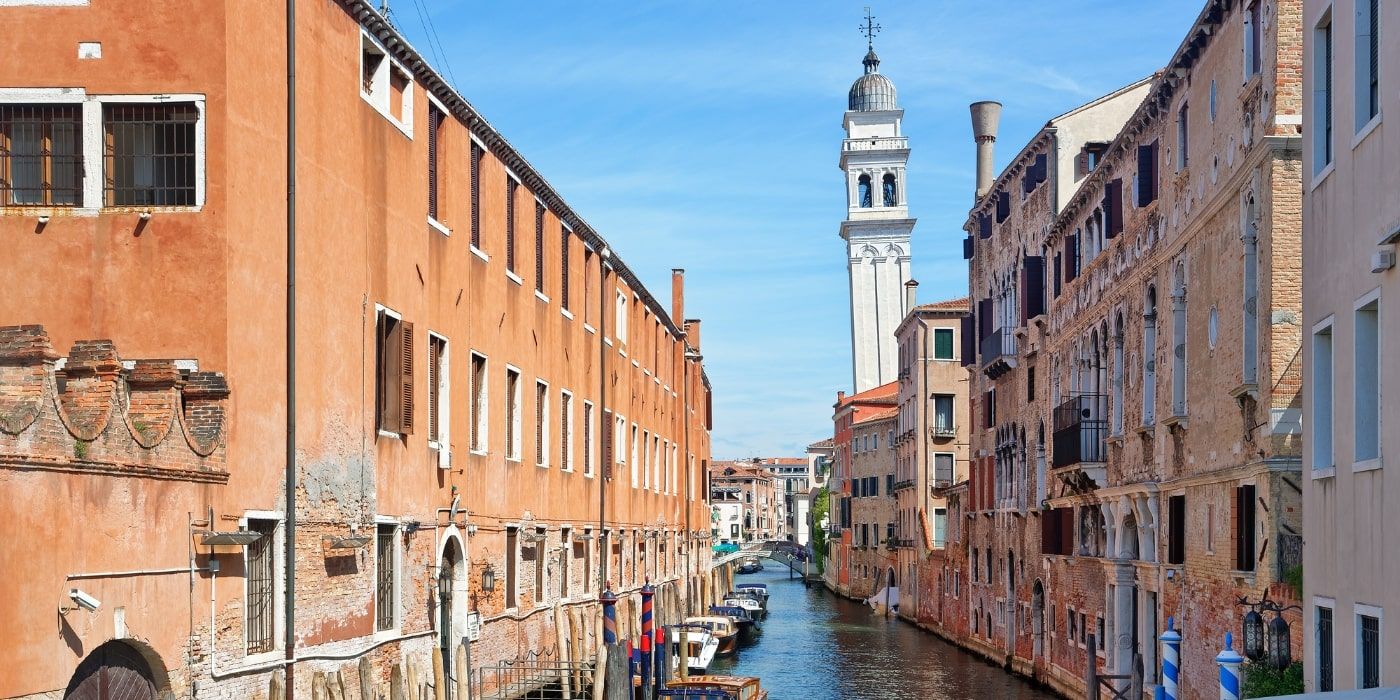

Alfred Runo
What happens when art meets gravity? Our journey through Italy’s crooked buildings.